









|

|







|
Products & Services
|
iPad 2 NO Backlight RepairiPad 2 LCD backlight is tiny LEDs. In order to light up these LEDs at the same time, a higher voltage drop is neccessary. This voltage is boosted up by the circuit components L8225, U8100, D8228, C8233, L2200, and J2201 Pin 9, 10 and input to LCD Panel. Power IC U8100 Pin N15, P15 "WLED_LX" provides a chain of on-off rectangle pulses to anode of D8228. As "WLED_LX" is on, energy is charged on L8225 and as "WLED_LX" is off, energy on L8225 is released to D8228 and then piles up on C8233. The capacitor C8233 finally has a enough voltage drop to light up all LEDs on LCD panel at the same time. Theory on Switching Boost Circuit is shown below. NO light, NO display or dim backlight is caused by the defective of one of the component in the circuit or by defective LCD panel.Repair example: Voltmeter shows that both pin of diode D8228 has the same voltage 3.7V. Suspect that there is a cool solder on U8100 "WLED_LX". Try to reflow U8100 and the repair is done.done. 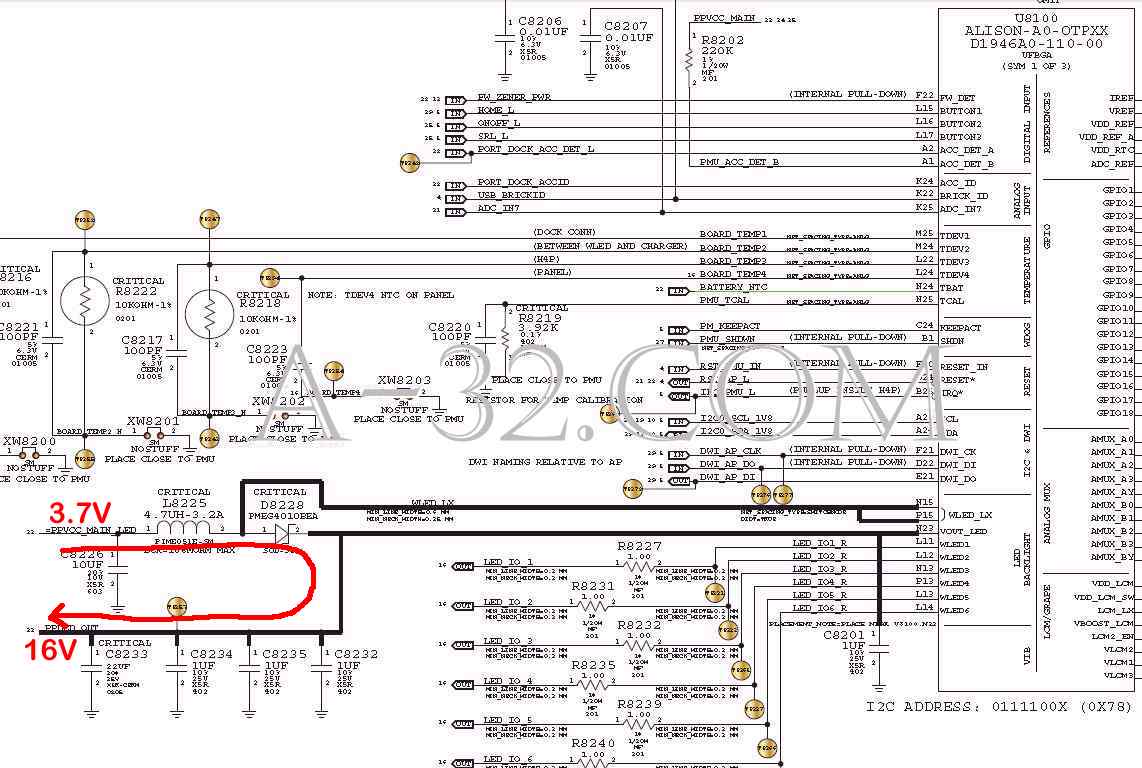 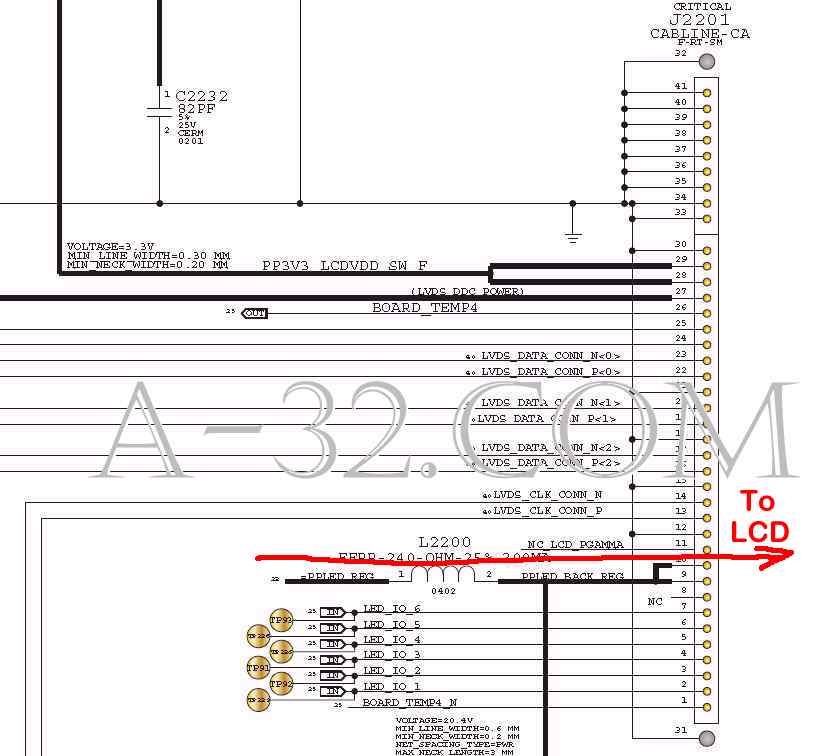 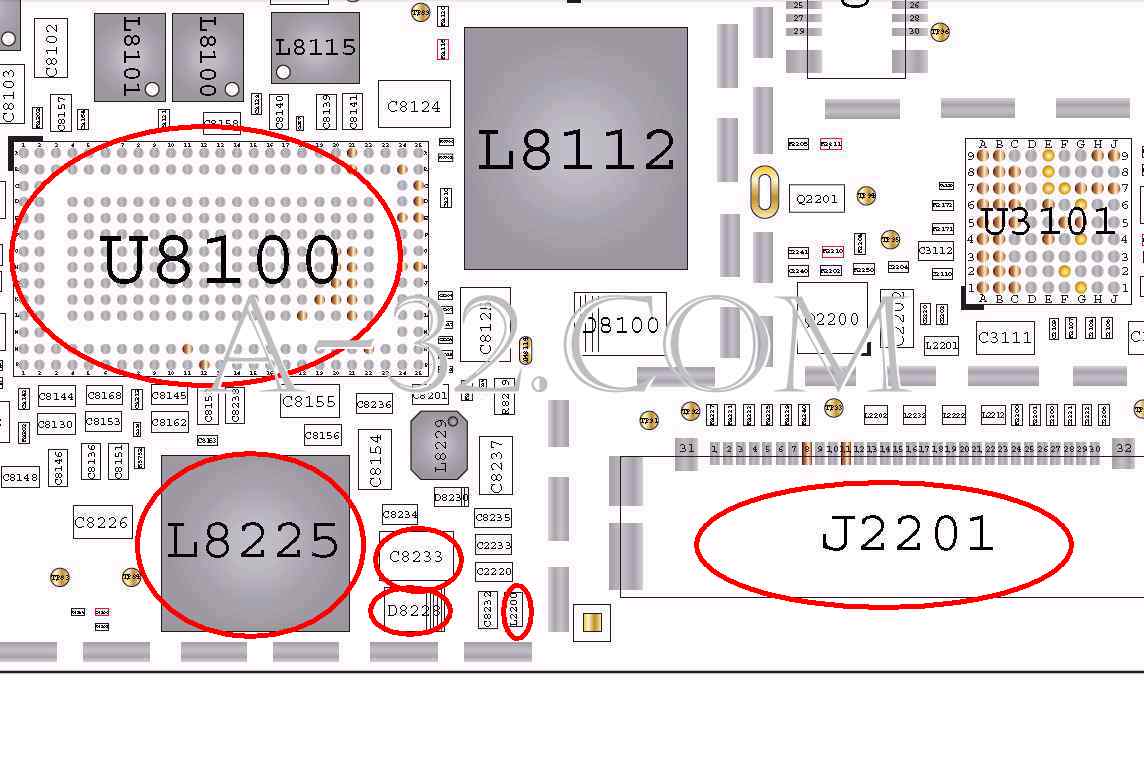 THEORY: 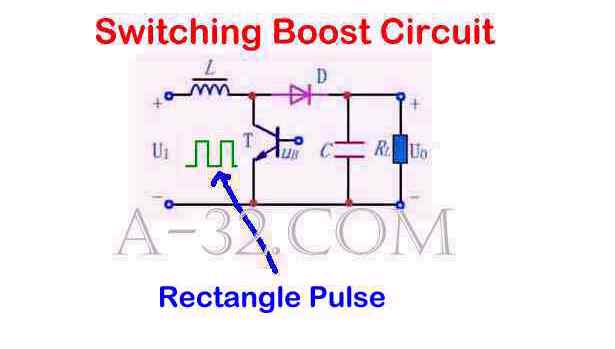 1) Switching Boost Circuit is a DC-DC converter which is by mean of ON-OFF rectangle pulse to pump up the voltage to desired level. Here is the brief illustration of this widely used circuit. As the intial pulse is HIGH, transistor turns ON to allow current go thru coil L. Coil stores eneregy in the form of magnetic field. 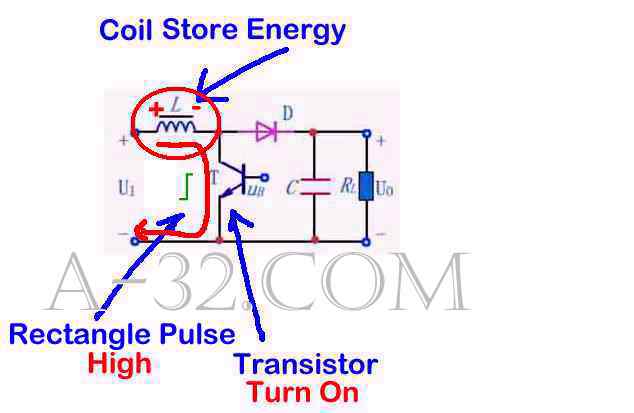 2) As the pulse goes LOW, transistor turns OFF. This sudden drop of current causes coil L to produce a back e.m.f. in the opposite polarity. This results in two voltages, the input voltage U1 and the back e.m.f.(V=VL) across L in series. Since the transistor is off, this combined voltage (U1 +VL) is no way out except that it goes thru the forward bias D and charges capacitor C. 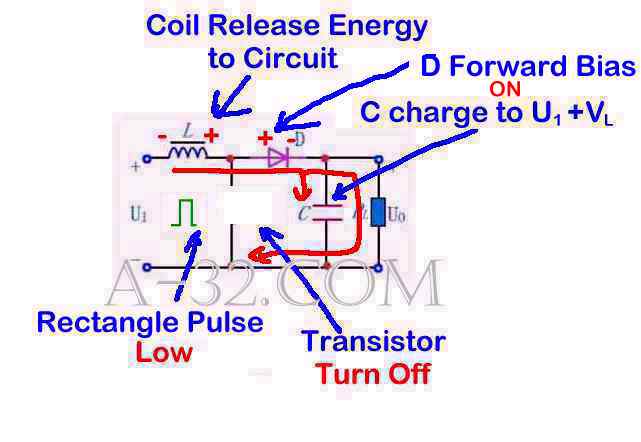 3) As the pulse goes HIGH again, transistor turns ON and L stores energy accordingly. Due to the charge on C, the cathode of D is more postive than its anode. Diode is reverse bias and then turns off. C releases a voltage of U1+VL to output (U0). 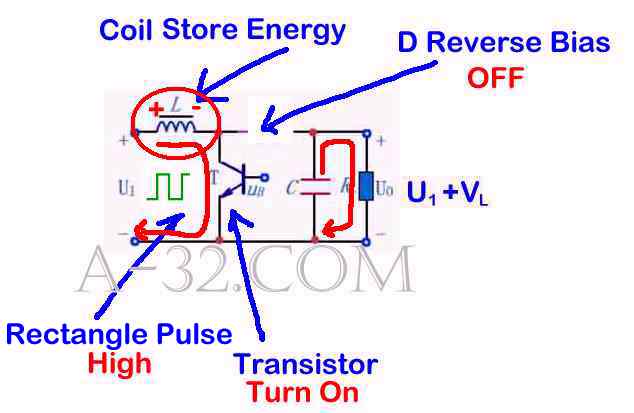 4) The output voltage (U0) is determined by the input voltage (U1) and the duty cycle (D) which is ratio between pulse HIGH (TON) and period in a rectangle pulse. For the voltage on a coil is V=L(di/dt) or di/dt=V/L. Integrate both side we have the current i=(V/L)xT where V/L is a constant for a rectangle pulse. While the transistor is ON, current at node A is ramp up, i=(U1/L)xTON. While the transistor is OFF, current at node A is ramp down i=-(U0-U1)/LxTOFF. In a steady state, total current at this node is zero, ie (U1/L)xTON + -(U0-U1)/LxTOFF = 0, simplify we have U0=U1(1+D/(1-D)), where D=duty cycle=TON/(TON+TOFF)=TON/Period For example: if duty cycle is half, ie pulse HIGH and pulse Low are equal, then output voltage will be double. U0 = 9V x (1+ 0.5/0.5) = 9V x (1+1) = 18V 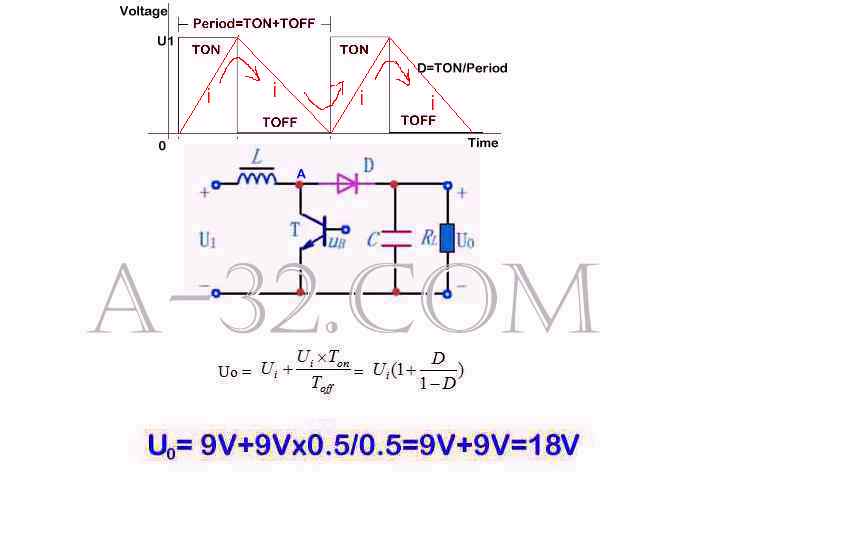 |